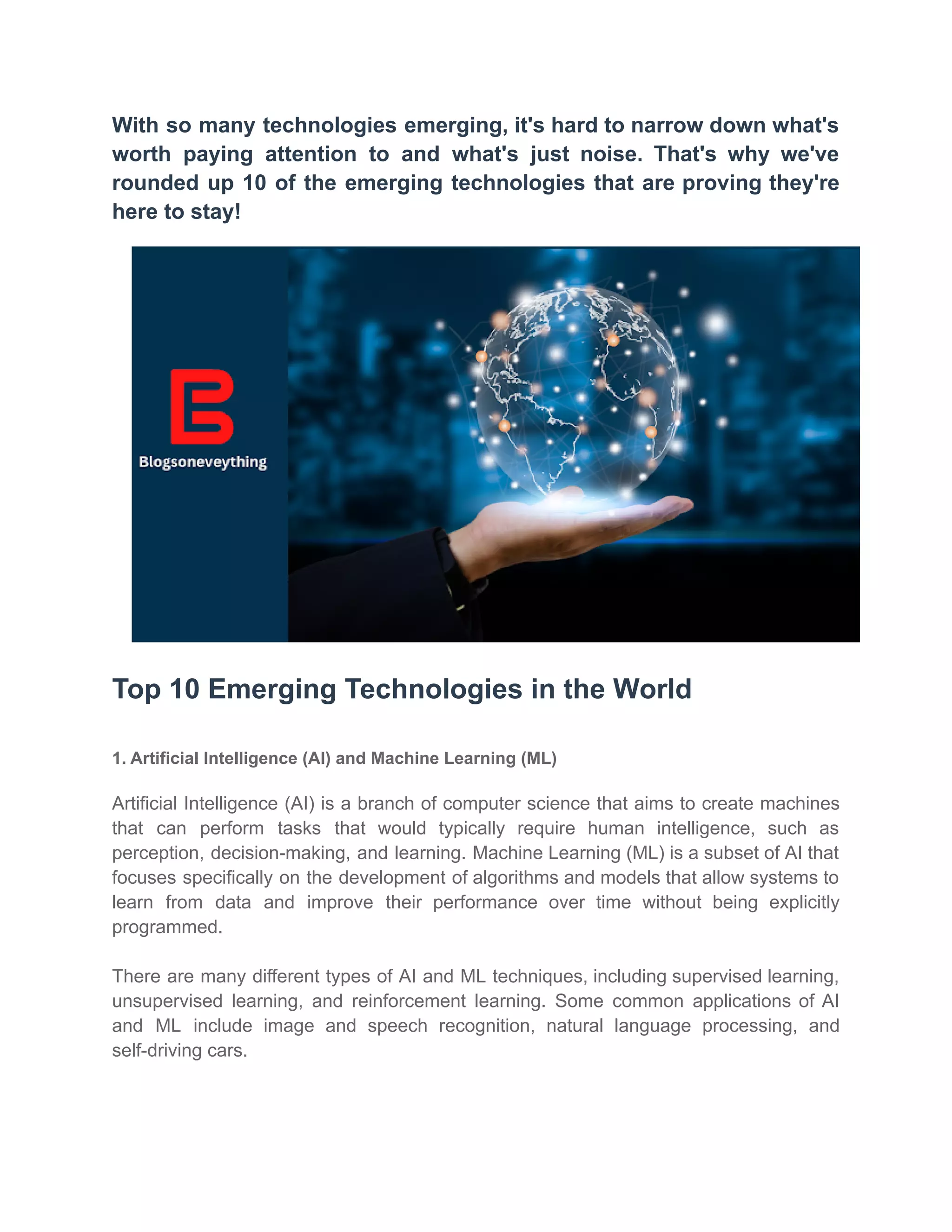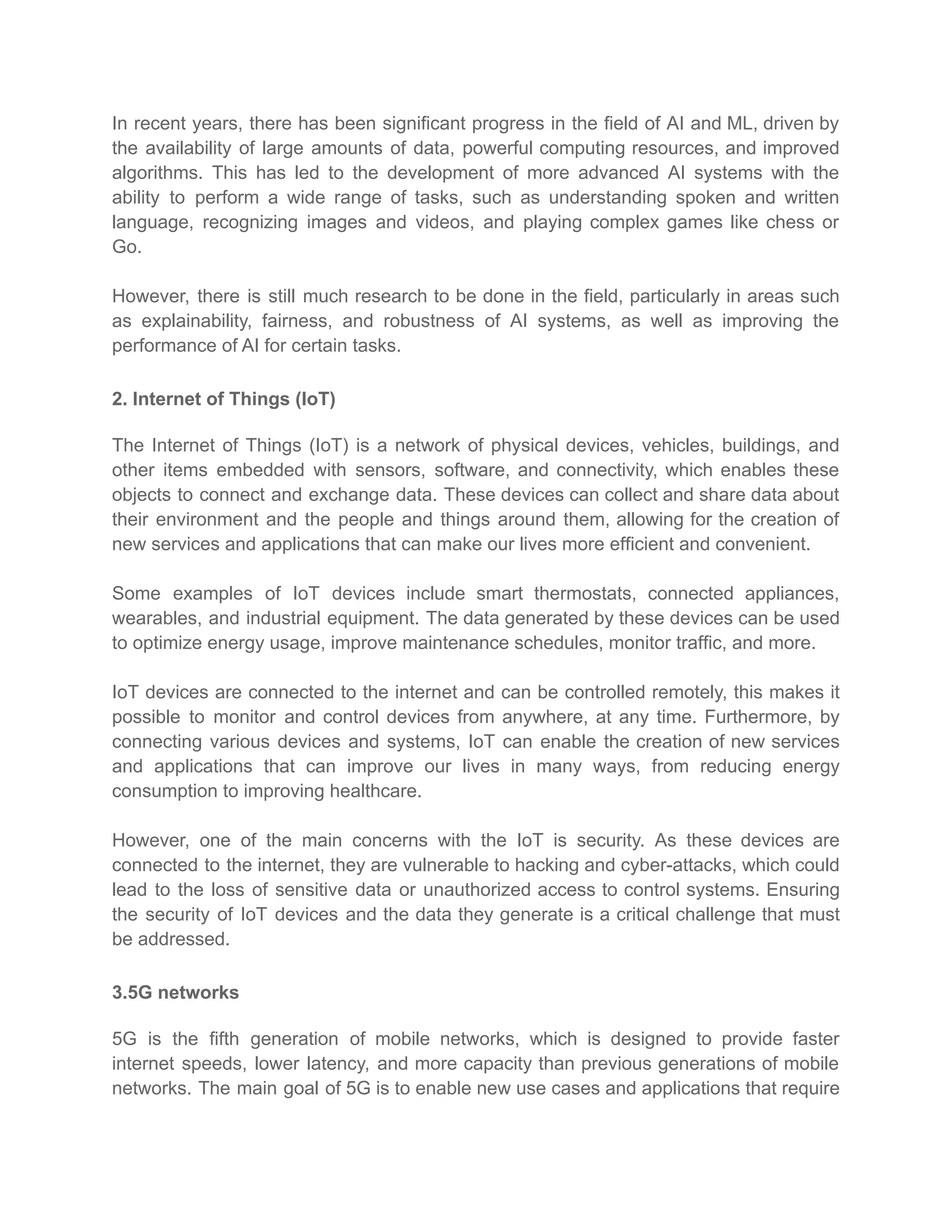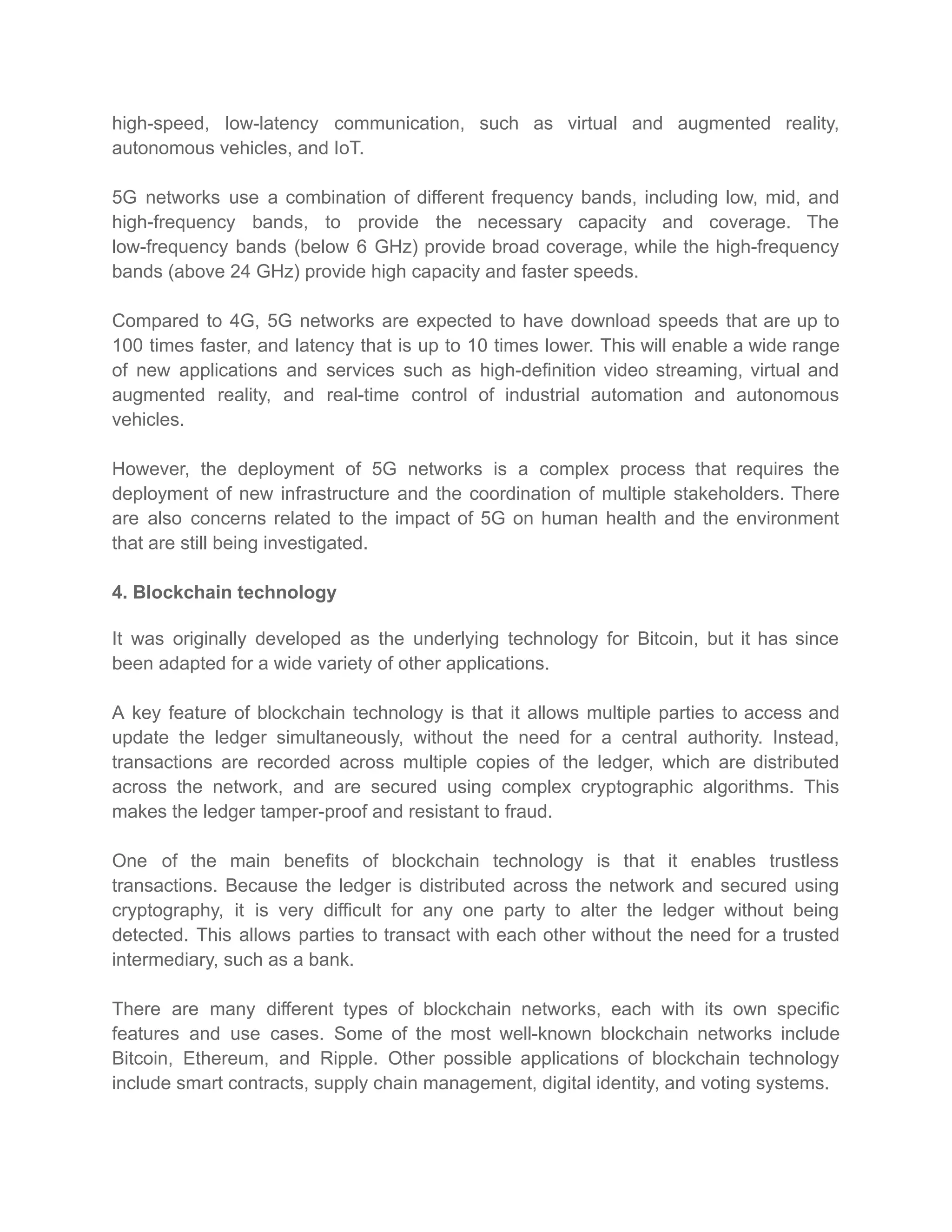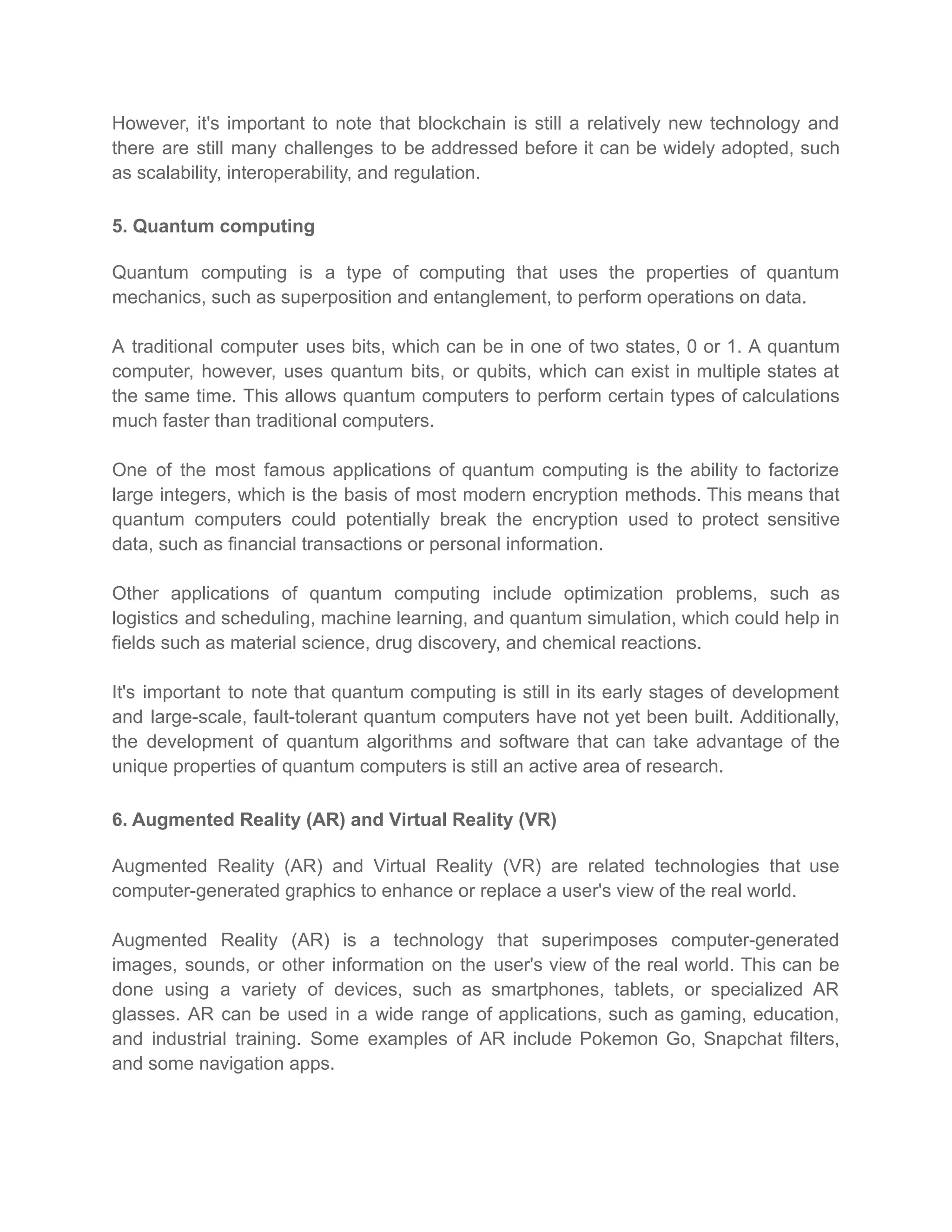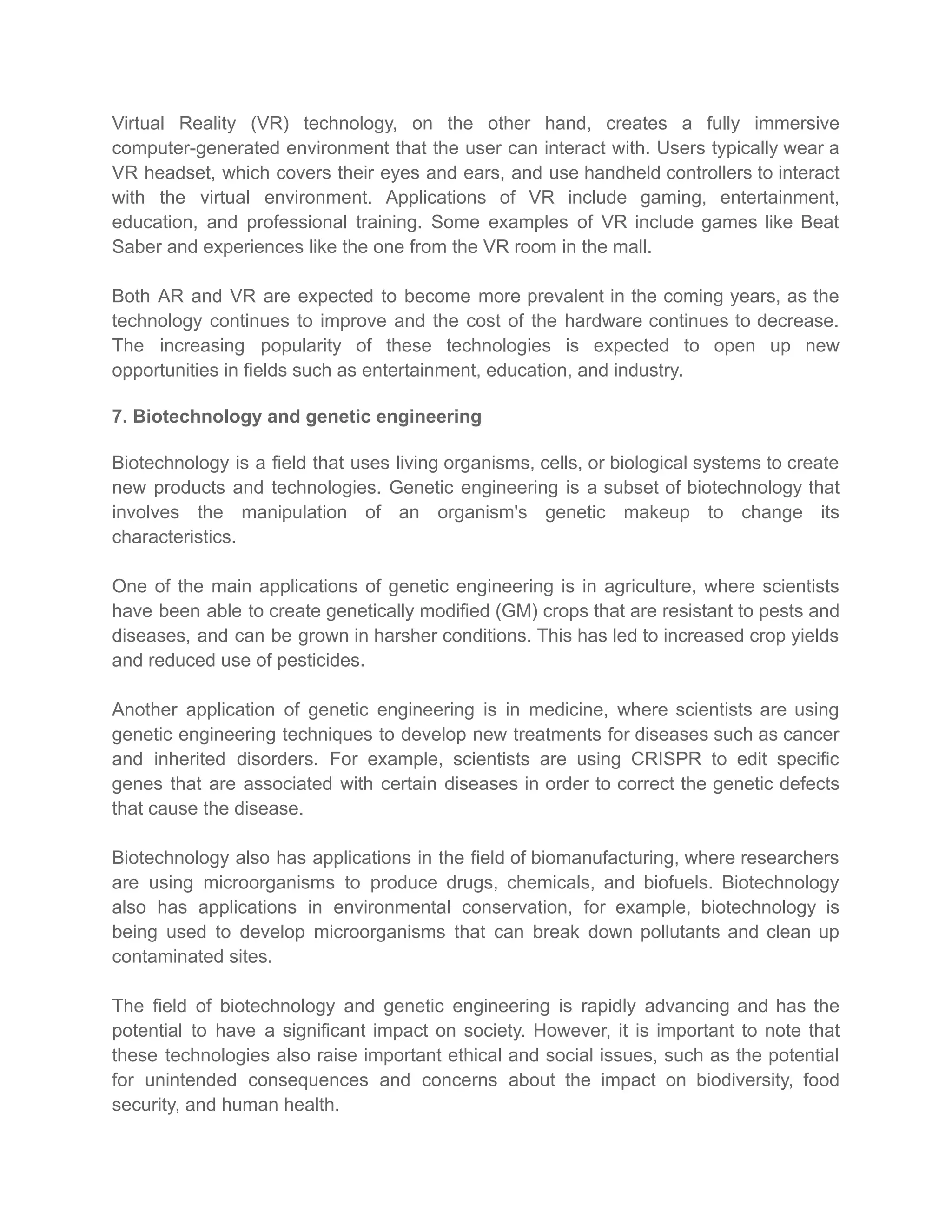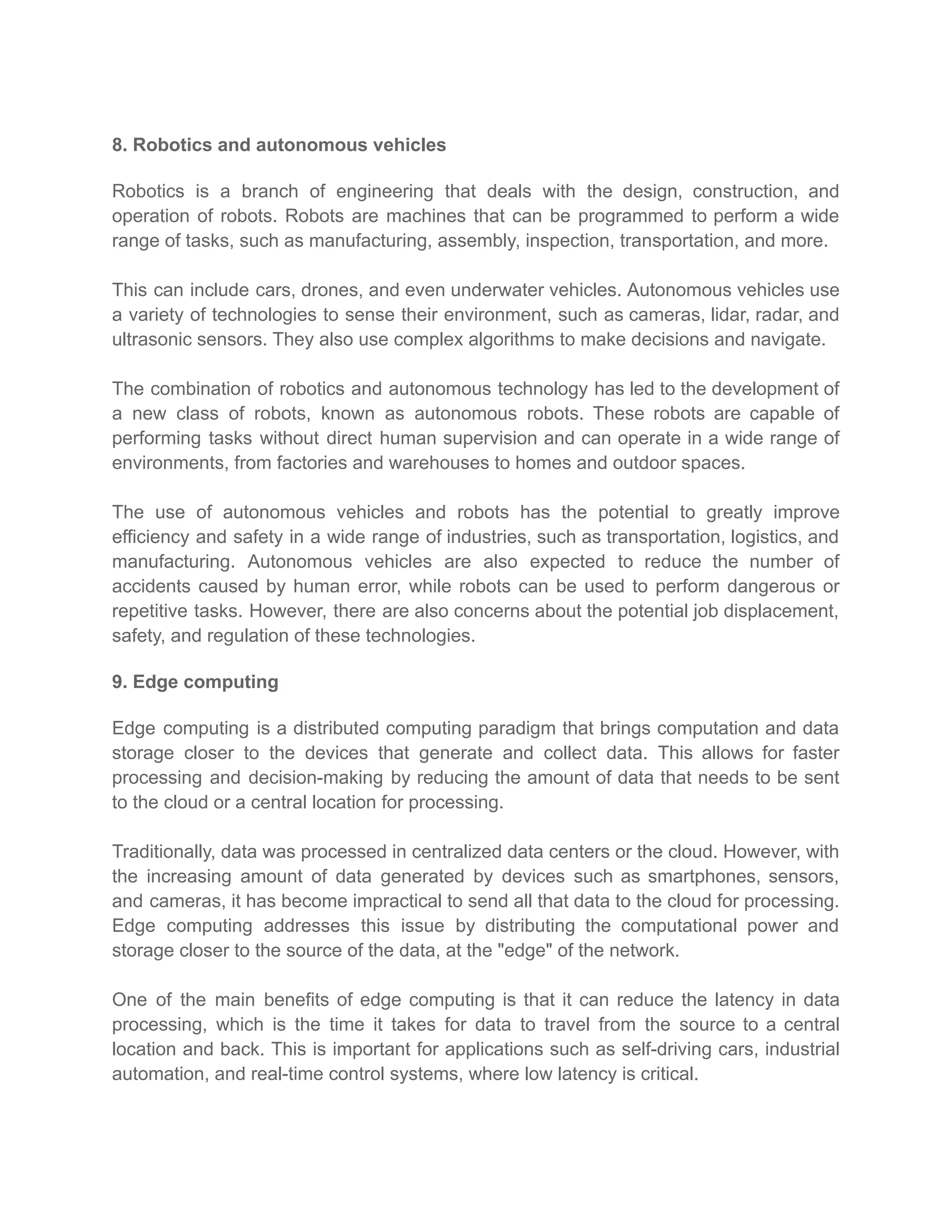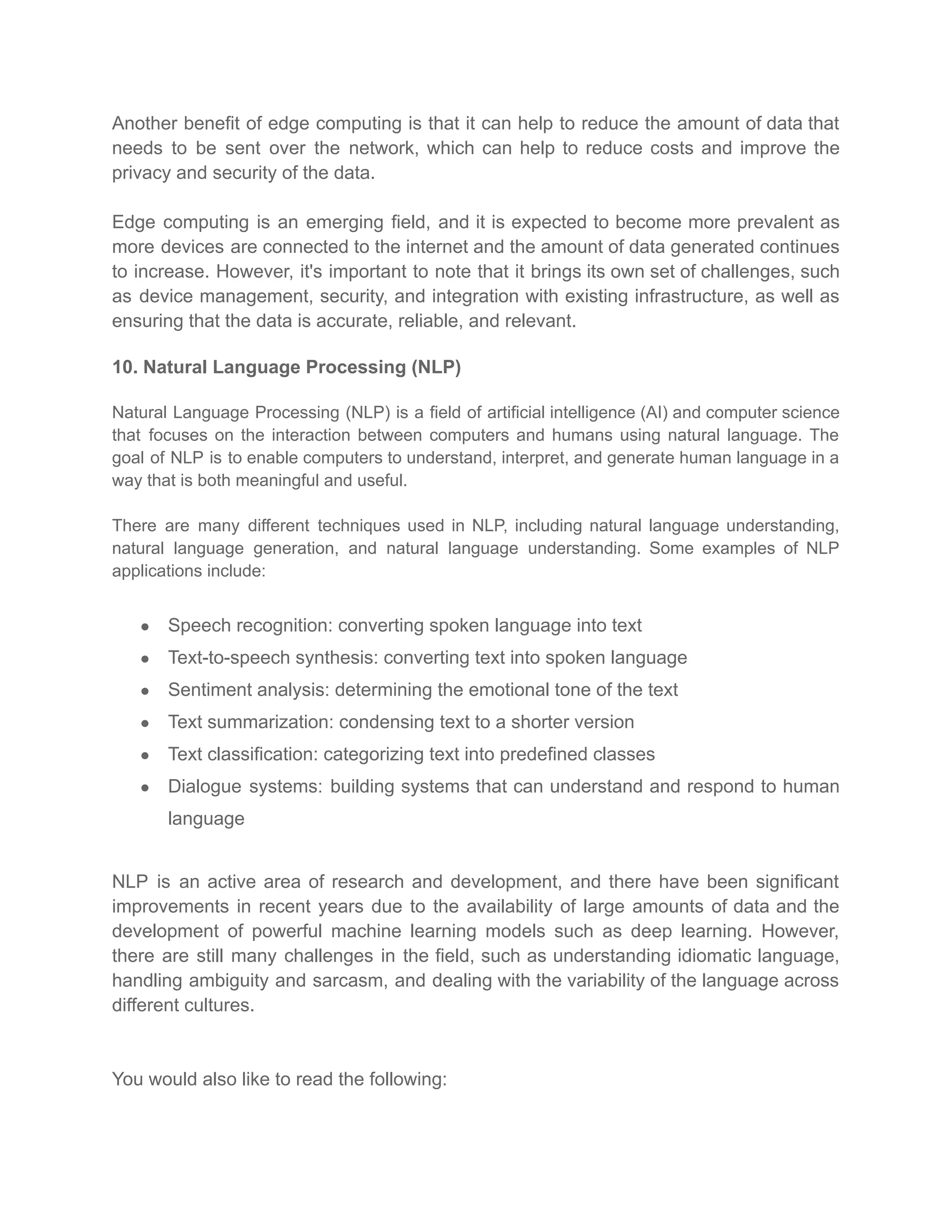This document highlights 10 emerging technologies that are significant for the future, including artificial intelligence, internet of things, 5G networks, blockchain, quantum computing, augmented reality, biotechnology, robotics, edge computing, and natural language processing. Each technology is briefly described, covering its key features, applications, and potential challenges. The overall focus is on their transformative impact across various sectors, while also noting ongoing concerns such as security, ethical implications, and the need for further research.
